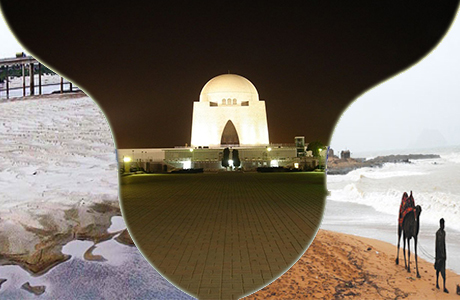Karachi has a lot on its plate, but it is still food insecure
By: Farhan Anwar
 In the face of rising population & climate change, one of the biggest challenges that nations all over the world are facing is food insecurity.
In the face of rising population & climate change, one of the biggest challenges that nations all over the world are facing is food insecurity.
The World Food Summit defines food security as:
“When all people at all times have access to sufficient, safe, nutritious food to maintain a healthy and active life”.
At present, in total, around three billion people are malnourished out of a total global population of 7.2 billion people.
Which implies that around 40 per cent of the world is malnourished.
In Pakistan
According to the Pakistan Vision 2025 document, global warming and climate change – resulting in significant and lasting change in weather patterns – are having a direct and severe impact on national food security considerations..
Pakistan’s economy is heavily dependent on agriculture and the declining productivity in the sector is one of the main reasons for the unavailability of food and, hence, food insecurity.
This low productivity is the result of a number of factors, including low quality inputs, poor management of farmers, non-judicious use of water and a decline in the productivity of land.
Karachi’s pie
Historically – and also supported by the nature of the physical landscape, resource availability and topography – the rural landscape of Karachi has been distinguished by its agriculture and grazing-based land use and associated economy and culture.
That land use is now being altered at an alarming pace through land grabs and unplanned urbanisation.
With change in land use, the overall cultural, socio-economic and financial profile of the area is being transformed and distorted beyond recognition.
In addition are issues such as over-extraction of already diminishing ground water resources and inappropriate cropping and farming practices.
However, Karachi’s land, if properly managed, may still have the capacity to meet the entire food demand of the city.
The Master Plan of 1974-75 can serve as the reference document for implementing and facilitating policies and projects.
Not only does the plan proposes viable planning guidelines for establishing a sustainable and profitable rural economy, it also indicates the possible economic potential and gives detailed recommendations for putting in place a water supply infrastructure to sustain the agro-economy.
While quite a few years have passed since the document was inked – the city has changed and resources such as water have been much exploited since then – there is a definite feasibility in revisiting that document and adapting the planning recommendations for the present scenario.
The plan had identified the Gadap-Konkar and the Malir Valley as the largest cultivable tracts in the Karachi Plain within a larger Water Husbandry Area.
It had also devised a comprehensive Water Regeneration Scheme for supporting the agricultural economy aimed at improving the groundwater reserves through suitable recharge measures.
Under this scheme, a mixture of urban waste water and surface water were to be used for irrigation and groundwater development in the Karachi Plain and the Hub Valley, while natural surface water and groundwater were proposed to be used in the Kalu Kahar and Baran basins.
In both areas, infiltration of surface water was to be increased by the construction of dams and dugouts.
The proposed Water Regeneration System was to utilise rising mains and unlined canals to carry waste water from urban areas.
After primary and more complete treatment in sewerage treatment plants, to agricultural areas where it was to percolate through the soil into underground reservoirs, thus undergoing final purification and increasing the ground water reserves to be used for irrigation.
The government can also involve the private sector to make this vision possible. The question that arises though, is will it care to do what is required?
October, 2014
Source: The Express Tribune